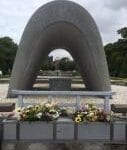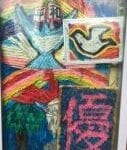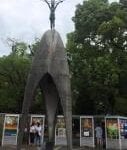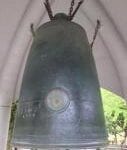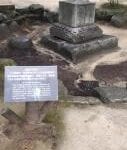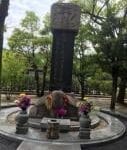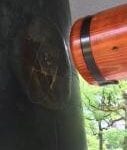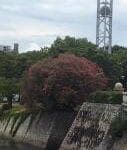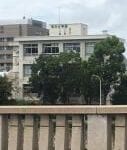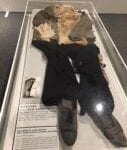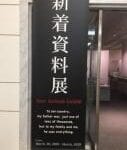Written by Thu Tran, MD,FACOG
September 1, 2018

Two weeks ago we were in Japan. It was an amazing and interesting country and culture for us to explore. The Japanese we met during our trip were so polite, so gentle, and very formal in many ways. Their streets were absolutely clean, something we had heard from many friends who had travelled to Japan before. In many public places in Japan, there are no trashcans! People are so responsible they bring their own trash home. One day, my tour guide noticed I was holding pieces of trash in my hand. He motioned for me to follow him into a convenience store, put my trash in the proper bin, as Japanese people are highly conscious about recycling, and politely asked me to buy something from the store. He told me how responsible people do not use someone’s trashcan without “paying back.”
During our two week journey to Japan, we woke up early every morning to hop on subways or trains, including Japan’s famous bullet trains traveling at 150 miles/ hour, to a new destination. At one point, our college son complained he had more sleep in college than when traveling with us! We wanted to experience the essence of this fascinating country. We visited ancient towns, busy streets of Tokyo and Kyoto, foodie corners of Osaka at night where one can tell what restaurants specialize in by the food sculptures on top of their doors, a crab, dumplings, or even blow fish. We also wanted to see the sad part of Japan’s history, that of Hiroshima.
On a cloudy morning, we arrived at Hiroshima. Our tour guide met us at the train station and we rode the local bus with her to the Peace Museum. We were glad we visited Japan in August, when the tourist crowds were less massive. The heat was above 100 degrees Fahrenheit daily during our stay in Japan. To be inside the Peace museum, we thought, was a good break for us and our son who often did not tolerate heat very well.
The history of war between Japan and the US, to a Vietnamese immigrant like me, was never something that would keep me awake at night. Every year, on August 6, I would hear about the memorial ceremony in this far away city called Hiroshima. I had paid more attention to what happened to the history of America that took place on American soil, such as the internment camps where Japanese Americans were rounded up, as if in any moment, they would betray their country called the United States of America, and fight alongside “the enemies” instead. In war time, the color of their skin and the differences of their features reminded the white American leaders at that time of their Japanese heritage and put the loyalty to their birthplace in question. Hiroshima was this elusive city in my mind, where the mushroom cloud of a man-made bomb destroyed so many lives.
To visit the Peace Museum in Hiroshima, however, was an awakening. It was hard not to shed tears for the victims I never met, when reading the posters of how August 6, 1945 has forever changed the history of Japan. The tour guide made sure we saw the elementary school across the street from the museum, the only building by the Misasa Bridge that stood intact after the atomic bomb hit Hiroshima. Every building nearby either vanished or became skeletons, except for this elementary school, where only a single ten year old girl survived. She was somewhere in the basement of the building when the bomb hit the bridge outside, and when she came up, everybody in her school had died. Her entire family, elsewhere in the city, perished; she was the only survivor. She later became a hairdresser and died in her 80s.
We saw a little crater on the ground where an ancient gravestone was moved by the bomb, a memorial for the 20,000 Koreans (conscripts) who had died in the blast after having been brought to live and work in the area, the Children’s Peace Monument and thousands of origami cranes created in memory of Sadako Sasaki, who survived the bombing at two years old. Sasaki folded a thousand origami cranes for peace before she died of leukemia at 12 years old. Her yearning for peace lives on, as people from around the world have continued to make origami cranes in her memory. We also rang the Bell of Peace, a dome-shape bell created by Masahiko Katori in 1964, to wish for a world free of nuclear weapons or wars. Nearby, a clock tower chimes daily at 8:15 a.m., the time of the blast, as prayer for perpetual peace.
Inside the museum, we stood around a simulating system to watch in horror, how that morning played out on August 6, 1945. We looked inside a huge circular viewing screen which displayed pictures of the whole city when it was still intact. A clock inside the circle signaled the time the bomb was dropped, which was 8:15 a.m. The bomb exploded, at an altitude about 2,000 ft over the city of Hiroshima. Blasting lights would initially be seen, followed by intense heat, and fires engulfed every corner. In brief moments, about 140,000 lives were destroyed. The heat was 3,000 to 4,000 degrees CELSIUS! Keep in mind, a hot day in Japan during our trip was 100 degree Fahrenheit, which was 37 degrees Celsius ! How did 4,000 degrees Celsius, which is 7,232 degrees Fahrenheit, feel to one’s body? Did you know 4,000 degrees Celsius can even happen on earth? The atomic bomb in Hiroshima created a fireball of 1,200 ft in diameter with a surface temperature as high as 7,232 F. How would we have escaped this catastrophe if we were among the citizens of Hiroshima on that day?
We saw an exhibit of the Hiroshima Red Cross Hospital which will be on display in this Peace Museum until March, 2019. There were photos and sketches of the morning after the bombing. We read how hundreds or thousands of injured were crawling all over the grounds in front of this hospital screaming for help. There were photos of burned victims, actual remnants of victims including a burned school uniform of a male student with body fluid stains still visible all over the shirt. I was nauseated just to read the posters and look at the ordinary items of an ordinary life that was no longer ordinary after that morning. How could humans invent such a small object which could destroy 140,000 lives? What did we do to our human race? Science and humanity were at a crossroad.
Before leaving Hiroshima Peace Museum, the tour guide and we stood by the Motoyasu River, on the Misasa Bridge. On the other side of the river, the skeleton of the Industrial Promotion Hall stood amid the ruins. This building, completed by the Czech architect Jan Letzel in 1915, was added to UNESCO List in 1996. After the bomb explosion, everybody in the building was killed and the fancy green dome of the building was gone. Each year, on the night of August 6, paper lanterns are floated in the river, in remembrance of the thousands people who, in a moment of panic after the massive explosion of the atomic bomb, jumped into the river to avoid its heat, just to perish in the burning water. What did they think in that moment; was there enough time for a last fleeting thought?
Sometimes in death we learn about life. Death seizes the moment and brings all the important issues into our much needed focus. We often hear how leaders of the world should stop nuclear proliferation, but it often requires the visual effects of burning bodies and skeletons of buildings for us to consider the destruction from wars. A glimpse of that serene river on a cloudy day in Hiroshima would not have shaken my core until I saw the exhibits inside the Peace Museum. Ironically, we visited Hiroshima the day after the Anniversary of the end of WW2. The day before, the emperor of Japan spoke up, again, about the role of the Japanese government during WW2. It takes courage to acknowledge a nation’s mistake leading to a horrible event; it also takes courage to forgive and heal.
Today, Senator John McCain’s funeral deeply moved me. He was a man of courage and grace. An article in the NYT by James Poniewozik recounted how the Senator had orchestrated his own funeral in detail, as a last message to his fellowmen. He even picked Frank Sinatra’s song “My Way” to be played as the recessional. In Poniewozik’s words, Senator McCain “coordinated his last media blitz to say that American leaders should, after and even amid a fight, see their opponents as humans and not simply obstacles to be crushed.”
Maybe all world leaders should be encouraged to visit Hiroshima’s Peace Museum. Let them stand by the Motoyasu river, the burning grave that drowned so many souls on August 6, 1945. Let them walk around the room where faces of the 140,000 victims were flashing on the surrounding walls, on computer screens, hundreds at a time. They were children, elders, men and women, some smiling, others with their eyes staring at us, as if they were asking “Why me?” They were real people, in their ordinary life, on an ordinary day, perished at the command of a few human beings like them, from across the globe. It is easier to kill the invisible enemies.
Let each leader of the world ring the Bell of Peace, to promise there will be no other day like that August 6, 1945 morning in Hiroshima. Let them visit The Children’s Peace Monument to think of Sadako Sasaki, the young girl who folded a thousand origami cranes for peace, and the thousands of child victims of the atomic bombing of Hiroshima. If even a young girl knew peace means life, why wouldn’t leaders of the world get that simple concept?
While we are waiting for an awakening in the world leaders against nuclear proliferation, let us support organizations which have worked toward abolishment of nuclear proliferation. In 2017, the Nobel Peace Prize was awarded to the International Campaign to Abolish Nuclear Weapons ( ICAN), a global coalition of NGOs that involves 468 organizations from 101 countries. ICAN raises awareness of humanitarian consequences of nuclear weapons and works on achieving treaty-based prohibition of such weapons.
Bell of Peace
We dedicate the bell
As a symbol of Hiroshima Aspiration
Let all nuclear arms and wars be gone,
and the nations live in true peace!
May it ring to all corners of the earth
to meet the ear of every man
For in it throb and palpitate
The hearts of its peace-loving donors.
So may you too, friends,
Step forward, and toll the bell for peace!
Dedicated September 20th, 1964
By Hiroshima Higan-No-Kai.
Tags: Hiroshima Peace Museum, Peace


